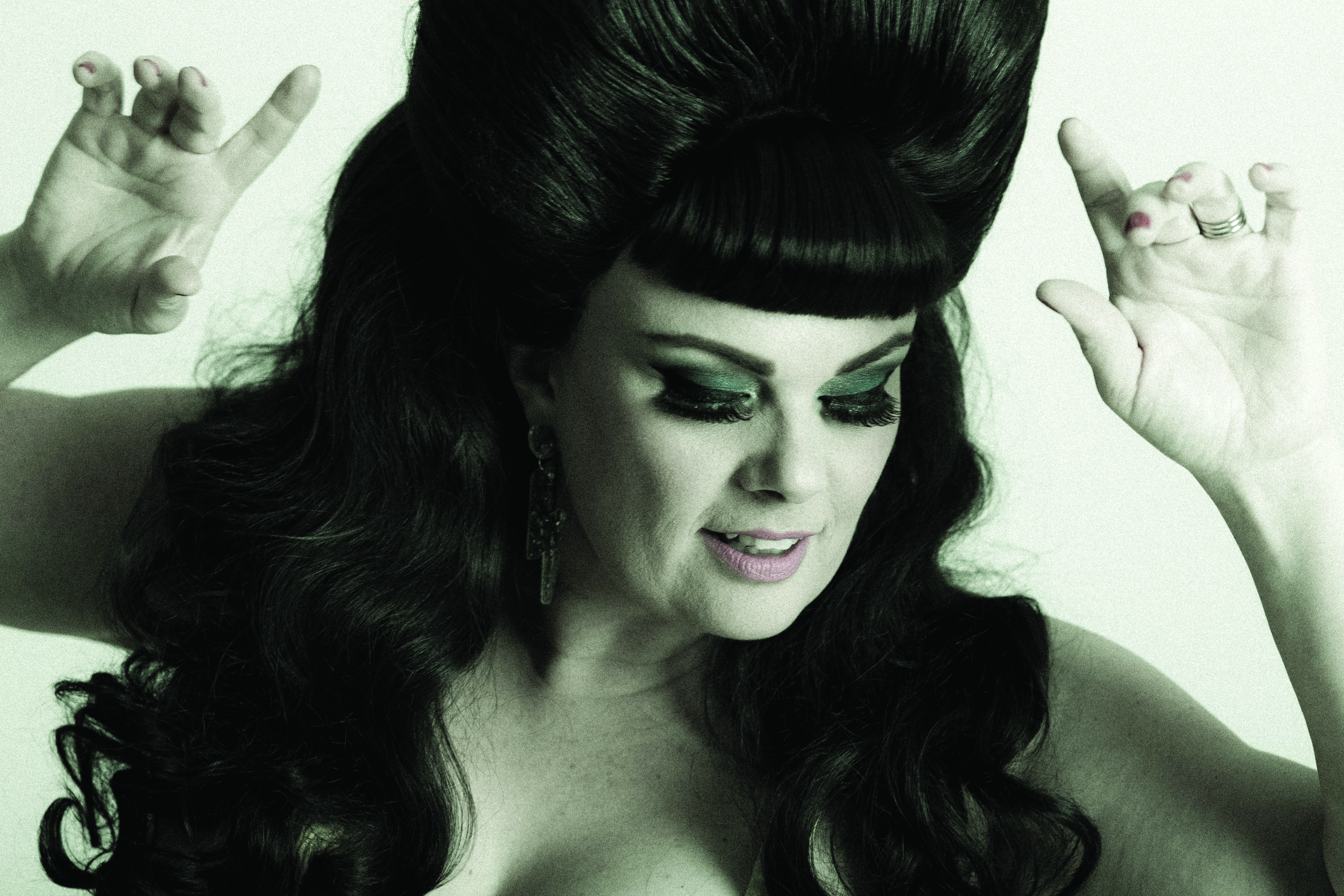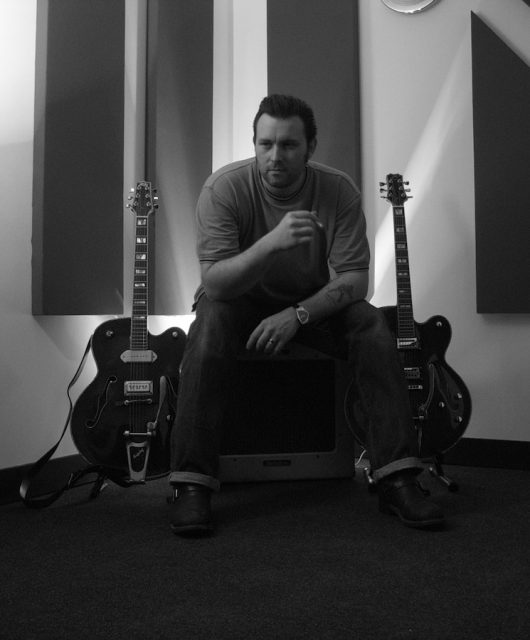From Victorian lumber yards to public piano performances on YouTube, boogie-woogie was a major influence on rock’n’roll and continues to enthral in its own right. Leading British player Daniel Smith talks us through the style that turns pianos into a one-man dance band.
Words by Douglas McPherson
In 1952, the 17-year-old Jerry Lee Lewis went to New Orleans and, at the J&M Studio’s Record Your Voice service, paid $2 to make his first two recordings, direct to disc. One was a country ballad; the other was an instrumental blueprint for rock’n’roll: a runaway train rhythm hammered out with his left hand while his right scattered notes like sparks over the top. The improvised tune was left untitled, but midway through Lewis announced the style: “Ah, that’s boogie-woogie!”
While 10 years earlier The Andrews Sisters might have put the term on the lips of the American nation with their irresistible wartime hit Boogie Woogie Bugle Boy, from the Abbott and Costello film Buck Privates, it is more likely that Lewis had been influenced by pianist Clarence ‘Pinetop’ Smith, whose 1929 hit Pine Top’s Boogie Woogie was the first record to use the term in its title.
Chicago Stomp
Pinetop didn’t invent the style, however. The very first boogie-woogie record is widely considered to be Jimmy Blythe’s Chicago Stomp, issued exactly 100 years ago in 1924, but the style goes back at least another 50 years, with the names of its earliest practitioners lost in the era before recorded music and when no one was writing sheet music for the rambunctious dance tunes being passed from one itinerant pianist to another.
“It was music formed by the circumstances in which it was born,” says Daniel Smith, one of the UK’s leading boogie-woogie pianists. Those circumstances were the emancipation of African-Americans, the expansion of the railroads, and the mass production of pianos.
“There was one year in the late 1800s in which the US produced more pianos than babies,” he says. “After the Civil War, when African-Americans were starting to move around the country, many of them worked in turpentine encampments, forestry encampments and railroad encampments. They’d have huts, called barrel houses, because of the moonshine liquor kept there in barrels, where the workers would go to drink and enjoy themselves on a weekend.”
“Every barrel house had a piano and the players developed this rhythmic boogie-woogie because it got people dancing. They were heavily influenced by the rhythm of the trains, and the industrialised rhythms: the clickety-clack.”
Fast Texas Blues
Oral histories, gathered in the 1930s, show that the music originated in Texas and spread outwards with the growing rail network, gaining regional variations over time. Early names for the music were Fast Western and Fast Texas, both derived from the Texas Western Railroad Company. In the late 1890s, some players called it ‘Sixteen’, and others, ‘Eight to the bar’.
“Boogie probably comes from the French bouger, which means ‘to move’,” offers Smith, who reckons the name would have been applied in New Orleans. “But 20 people will have a different theory.” The story is clouded by the fact that ‘boogie’ was first used in songs such as That Syncopated Boogie Boo, a 1913 cylinder recording made by the American Quartet, that weren’t boogie-woogie in style.
The ‘woogie’ part is an example of reduplication, in which a nonsense rhyme is added to make a memorable phrase. “Like easy-peasy or honky tonk,” says Smith.
Eight To The Bar
While much contemporary boogie-woogie is instrumental, the early players would have called dance instructions and added call-and-response lyrics. This can be heard in Pine Top’s Boogie Woogie: “When I say ‘Hold yourself,’ everybody get ready to stop/ And when I say, ‘Get it,’ everybody boogie-woogie.”
The dance instructions are echoed in the slowed-down, spoken part of Jerry Lee’s Whole Lotta Shakin’ Going On: “All you gotta do, honey, is stand in one spot, and wiggle around just a little bit…”
Although Daniel Smith was born in London in 1967 and grew up in Scotland, he was born into the boogie-woogie tradition. “My maternal grandfather was a jazz piano player in Indonesia in the 1930s,” he says. “My mother was a very talented pianist and my bedroom was above the piano. I’d hear her play Beethoven and then seamlessly play some Winifred Atwell as well as a bit of blues and boogie-woogie.”
His father’s record collection was another influence. “He had everything from the great boogie-woogie players Meade ‘Lux’ Lewis and Albert Ammons to Jerry Lee Lewis and Little Richard. When I was eight or nine, I’d try to play along with them.”
The Swing Era
Meade ‘Lux’ Lewis and Albert Ammons, with Big Joe Turner’s pianist Pete Johnson, helped to take boogie-woogie out of the bars and rent parties to a wider audience when they appeared alongside artists including Count Basie and Big Bill Broonzy at the landmark From Spirituals To Swing Christmas concert at Carnegie Hall in 1938. The show traced the history of African-American music and was attended by a non-segregated audience. Lewis, Ammons and Johnson all went on to a joint residency at New York’s Café Society nightclub.
Boogie-woogie was absorbed into the big band repertoire when Tommy Dorsey and His Orchestra arranged Pine Top’s Boogie Woogie, without vocals, as Boogie Woogie. It was the second biggest seller of the entire swing era after Glenn Miller’s In The Mood, which was built around a boogie-woogie riff.
Others latched onto the boogie-woogie beat, including country singers such as the Delmore Brothers and blues artists including Huddie ‘Lead Belly’ Ledbetter. They flavoured it with the instrumentation of their own genres (Lead Belly transposing the bass to guitar), leading to the development of western swing and jump blues.
The Rock’n’Roll Years
“Boogie-woogie piano plus vocals is rock’n’roll,” says Smith. “I often say Roll ’Em Pete with Pete Johnson playing and Big Joe Turner singing was the original rock’n’roll song, in 1938.” Another contender for that title is 1951’s Rocket “88” by Jackie Brenston And His Delta Cats – the piano intro by Ike Turner is pure boogie-woogie.
In much rock’n’roll, such as Bill Haley’s Shake Rattle And Roll, boogie-woogie’s signature bassline was reproduced on bass instead of piano, which changed the sound and disguised its lineage. Little Richard and Jerry Lee kept piano at the forefront, however. To them, perhaps, the music was always boogie-woogie. When Jerry Lee covered Freddie Slack and Ella Mae Morse ’s 40s hit The House Of Blue Lights in 1975, he included a verse of his own Lewis Boogie and growled over the intro, “Where I come from, we call that boogie-woogie.”
That same year, he hit the Country chart with the self-descriptive Boogie Woogie Country Man and later released, Don’t Boogie Woogie (When You Say Your Prayers Tonight). At London’s Dockland Arena in the early 2000s, Little Richard interrupted his hits to tell the audience where the music came from. The crowd roared as he played a sparkling solo boogie-woogie instrumental.
Boogie Nights
Outside of Lewis’ and Richard’s minds, the changing musical landscape of the 60s saw boogie-woogie fade from the popular imagination. The term ‘boogie’ lived on in the 70s, without its ‘woogie’ (just as ‘rock’ continued without its ‘roll’) as a funky musical style and general term for dancing, in disco songs like Boogie Nights by Heatwave.
It lingered into the line-dance era of the 90s with Boot Scootin’ Boogie by Brooks and Dunn. But by that point boogie had long divorced its origins as a piano style, even if it retained the spirit of a dancefloor filler.
Chas and Dave mourned the disappearance of ‘woogie’ in Poor Old Mr Woogie, a song that cast Woogie as half of a once-famous vaudeville duo, forgotten when Boogie went on to bigger things without him.
Renaissance Moments
Boogie-woogie has made periodic comebacks in the mainstream. Bette Midler topped the US Adult Contemporary chart with her cover of Boogie Woogie Bugle Boy in 1973. Prog rock keyboardist Keith Emerson scored his only solo hit, in 1976, with his take on Meade ‘Lux’ Lewis’ Honky Tonk Train Blues. Christina Aguilera rewrote Boogie Woogie Bugle Boy in 2006, as Candyman, with lyrics that would have made the Andrews Sisters blush.
For all its use elsewhere, boogie-woogie endures in its original form as a solo piano style with a rhythm contagious to people hearing it for the first time. When Smith began playing the music in the 80s and 90s, he says: “Nobody knew what I was doing, but everybody loved it! You only have to start playing Honky Tonk Train Blues and it’s almost primaeval – people start dancing.”
Honky Tonkin’ On
Smith began performing in Sonny Black’s band where his playing proved such a hit that he was encouraged to start the Daniel Smith Blues Band. He released his first album, Southside Boogie in 1999 and has just unveiled his 19th, Blues Boogie Bayou & Ballads.
Jools Holland, as TV’s most prominent pianist, has helped to keep the music alive, while others such as Ben Waters also carry the flag. Recently, Brendan Kavanagh has become a YouTube sensation, playing boogie-woogie on public pianos. His channel has 2.5 million subscribers. In some videos, he arrives in disguise as a builder or security guard before astonishing passers-by with his hammering left-hand rhythms and right-hand pyrotechnics in a style no different to what Jimmy Blythe was playing 100 years ago.
“I don’t think it will ever die,” says Smith, “because even if it dies down a little bit someone is always going to…” He completes the sentence without words, by turning to his piano and rattling out some timeless boogie-woogie.
For more on Daniel Smith click here
Read more: Rock’n’Roll Heroes – Fats Domino






